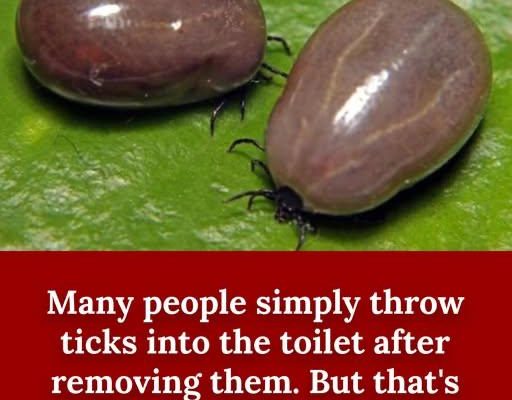Ticks are tiny arachnids that suck blood from mammals, birds, and sometimes reptiles and amphibians. Even though they might look harmless, ticks can carry diseases that can spread to humans when they bite. It’s really important to remove and dispose of ticks properly to lower the chance of getting sick from tick-borne diseases.
The Problem with Ticks

Ticks are known to spread different diseases like Lyme disease, Rocky Mountain spotted fever, and babesiosis. If these diseases aren’t treated, they can cause serious problems, so it’s super important to be careful when you’re around ticks.
You’ve Got a Tick On You – What Should You Do?

If you notice a tick stuck to your skin, the first thing you need to do is take it off carefully and quickly. Use fine-tipped tweezers or forceps to grab the tick as close to your skin as you can and pull it out gently in one smooth motion. Don’t squeeze or twist the tick because that might make it spit its contents into your wound.
What Not to Do When You Have a Tick On You

It’s really important not to use home remedies like matches, nail polish remover, or Vaseline to get rid of a tick. These tricks can irritate the tick and make it more likely to spread diseases. Also, don’t squeeze the tick or try to burn it off, because that can also cause it to release harmful bacteria.
How to Dispose of the Tick

After you take the tick off your skin, make sure to throw it away the right way. You can put the tick in a sealed bag or container so it doesn’t touch people or pets. Another option is to flush it down the toilet. Throwing away ticks properly helps stop them from spreading diseases.
Checking Your Pets for Ticks

To check your pets for ticks, you need to look them over regularly, especially in the warmer months when ticks are more active, and even in winter since ticks can live in cold weather. Check places like the ears, armpits, skin folds, toes, and groin by combing through their fur and feeling for any small, hard bumps on their skin. Using a fine-toothed comb and parting the fur can help you find ticks that might be hiding. The more often you check, the easier it will be to spot ticks on your pet.

When you take a tick off your pet, be careful and don’t use your hands. Use fine-tipped tweezers to grab the tick as close to the skin as you can and pull straight up with steady pressure to make sure you get the whole tick out. After you take it off, don’t crush the tick. Instead, put it in a sealed container so a vet can identify it. If you can’t take the tick to the vet, wrapping it in tape or putting it in a sealed bag is another safe way to throw it away. Flushing ticks down the toilet is also an option, but vets might suggest bringing the tick in for identification and further checking.
All About Lyme Disease

One of the most well-known diseases spread by ticks is Lyme disease, which is caused by a germ called Borrelia burgdorferi. Lyme disease can cause various symptoms like fever, headaches, tiredness, and a special rash called erythema migrans. If it isn’t treated, Lyme disease can lead to serious problems that affect the heart, joints, and nervous system.
Symptoms to Watch Out for After a Tick Bite

It’s really important to keep an eye out for signs of tick-borne diseases after you get bitten by a tick. The early signs of Lyme disease can feel like the flu, and you might have joint pain and muscle aches. Sometimes, a red bullseye rash can appear around the bite, which could mean there’s an infection. Other diseases from ticks might show up with fever, chills, and feeling really tired.
What to Do If You Have Symptoms

If you notice any symptoms after a tick bite, it’s very important to get medical help right away. Tell your doctor about the tick bite and any symptoms you’re having. Finding and treating tick-borne diseases early can help stop more serious problems from happening.
The Bottom Line

Removing and getting rid of ticks properly is a key step in lowering the chances of getting tick-borne diseases. By following the right ways to take off ticks and disposing of them safely, you can keep yourself and your family safe from the dangers of these tiny bugs. Stay alert, especially when you’re outside, and always ask a doctor if you think you might have been exposed to tick-borne illnesses. Your health and safety are very important when dealing with ticks.



